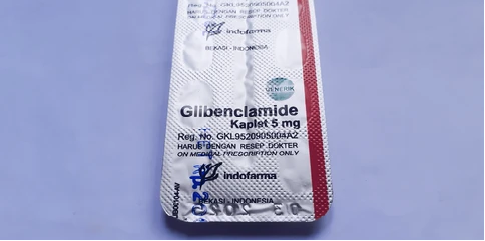What are Sulphonylureas?
Sulphonylureas are a class of oral medications commonly used to manage type 2 diabetes mellitus. They work by stimulating the pancreatic beta cells to produce more insulin, thereby lowering blood sugar levels. These drugs are particularly effective in patients who still retain some beta-cell function. Sulphonylureas indications and side effects are mentioned below.
Examples of Sulphonylureas
Followings are the generations of sulphonylureas.
- First-generation drugs:
- Tolbutamide
- Chlorpropamide
- Second-generation drugs (more commonly used today due to better potency and fewer side effects):
- Glipizide
- Glyburide (also called Glibenclamide)
- Glimepiride
Mechanism of Action of Sulphonylureas
Sulphonylureas bind to specific receptors on the beta cells of the pancreas (the sulfonylurea receptor, SUR1). This interaction closes ATP-sensitive potassium channels, leading to depolarization of the cell membrane. The depolarization opens calcium channels, allowing calcium influx, which stimulates insulin release.
Sulphonylureas Indications and Side Effects
Understanding of their indications and side effects before using them is of quite importance as these can cause complications.
Indications of suphonylureas
- Type 2 diabetes, especially in patients who are not achieving adequate control with diet and exercise alone.
Side Effects of sulphonylureas
- Hypoglycemia: The most significant risk, especially with long-acting agents or in patients with renal insufficiency.
- Weight gain: Often associated with increased insulin levels.
- GI disturbances: Such as nausea or heartburn.
- Rare adverse effects:
- Allergic skin reactions
- Bone marrow suppression
Contraindications of sulphonylureas
- Type 1 diabetes (as these patients lack functional beta cells)
- Severe liver or kidney impairment (due to metabolism and excretion issues)
- Sulfa allergy (though cross-reactivity is rare)

Good write-up, I¦m normal visitor of one¦s website, maintain up the nice operate, and It’s going to be a regular visitor for a lengthy time.